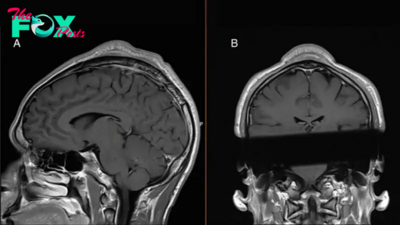Health
Paramedics may not all be using the best method for defibrillation, study hints
Contrary to popular belief, placing defibrillator pads on the front and back of the body rather than on the front and side may boost the chances of restoring a person's heartbeat, a new study hints.
The research looked at cases in which defibrillator pads were used following an out-of-hospital cardiac arrest. It suggests that back-and-front placement more than doubles the chance of success, compared to front-only placement.
The new study assessed the iNFLuence of pad placement on the survival outcomes of more than 250 patients with cardiac arrest. Cardiac arrests occur when the heart suddenly stops beating because of an electrical malfunction. (That's opposed to a heart attack, or myocardial infarction, which is caused by impaired blood circulation to the heart.)
"The key is, you want energy that goes from one pad to the other through the heart," Dr. Mohamud Daya, study co-author and a professor of emergency medicine at the Oregon Health and Science University, said in a statement. While the research provides early hints that pad placement makes a difference, it has limitations and thus bears confirmation in more extensive studies.
Related: Heart attacks fell dramatically during the pandemic — and they're still dropping
Each year in the U.S., more than 350,000 people experience cardiac arrest outside of a hospital, and less than 10% of them survive.
Two of the most treatable causes of cardiac arrest are ventricular fibrillation (an irregular heartbeat) and pulseless ventricular tachycardia (when the heart beats too fast to adequately pump blood around the body). In these cases, defibrillation, which delivers an electrical current to the heart via two pads that are placed on the body, can restore a normal heartbeat and increase survival rates — if it's performed quickly enough.
-

 Health2h ago
Health2h agoThe Surprising Benefits of Talking Out Loud to Yourself
-

 Health3h ago
Health3h agoDoctor’s bills often come with sticker shock for patients − but health insurance could be reinvented to provide costs upfront
-

 Health9h ago
Health9h agoHow Colorado is trying to make the High Line Canal a place for everyone — not just the wealthy
-

 Health18h ago
Health18h agoWhat an HPV Diagnosis Really Means
-

 Health1d ago
Health1d agoThere’s an E. Coli Outbreak in Organic Carrots
-

 Health1d ago
Health1d agoCOVID-19’s Surprising Effect on Cancer
-

 Health2d ago
Health2d agoColorado’s pioneering psychedelic program gets final tweaks as state plans to launch next year
-

 Health2d ago
Health2d agoWhat to Know About How Lupus Affects Weight



























